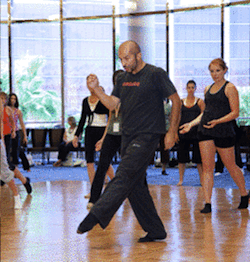
As dance teachers and artists, we are our own worst critics. We scrutinize every detail and go over things with a fine-tooth comb every day we’re in the studio. Why? Dancers aim for perfection. It is a lofty, unobtainable goal, but our art and training has us wired to strive for it. Everything from our physical bodies to our technique to performance, the natural tendency is to identify what’s wrong, what needs to be fixed and what could be better. This holds true when we work with our dance students as well. While it is our job to be there to teach and correct the students in front of us, it’s also important to stop and acknowledge at what they are doing right. We might get so caught up in the “assessment measures” that we fail to recognize we are also dealing with children and adolescents. Those same children and adolescents who just might need that bit of recognition and praise every now and then to stay motivated and realize they are on the right path to progress.
Now, I personally am not a teacher who has the mindset to complement their dancer at every single turn and stroke their ego simply because we are currently based in a society where every child gets a prize, just for showing up. That’s just me. But, I do believe that if critique is not sprinkled with praise for hard work, when well deserved, it can deflate a student and leave them wondering if what they are doing is even worth the commitment. Our goal should always be to build our dancers up with positivity and nurture their love of dance.
What is essential for an effective teacher is making them understand that in the time of critique and feedback, it is done out of love and for wanting them to do better. It is the fine line of inspiring them to believe in hard work and process as well. Understanding that there will be good days and bad days is key to teaching how to look at the big picture and work towards the big goal in the end.
While teaching class be mindful of some things when critiquing:
- Your delivery.
- Your tone.
- How often do you single out a single student?
- How often do you verbally acknowledge when a student does something really right?
- How often do you privately speak with a student on something they are doing really well in class?
- How well do you explain a critique or correction? Does the dancer understand how to work on it and apply the correction? Have you offered multiple ways to explain it so the dancer grasps the lesson?
Always keep in mind that tough love and discipline are not dirty words we should avoid as teachers. What is essential is also looking at the things our dancers are doing well. This is a reflection on your teaching and their direct response to it, so keep the balance in terms of feedback and always keep the lines of communication open with your students. Remember, positivity is always key, whether giving praise or criticism. Your dancers will appreciate it and learn even more in the long run!
Good Luck!
Stay safe. Stay healthy.
See you in the dance studio,
Jess
Did You Know? That Dance Teacher Web 3.0 is now the LARGEST online resource for dance teachers and studio owners with 900+ videos, 100's of articles and lesson plans to help you stay current and creative all year long. For the busy Dance Studio Owner, we offer fantastic articles on topics like Marketing, How To get more students and Increase revenue, Business building seminars, Downloadable manuals, Sample ads and Forms to help you take your business to the next level.
Think of us as your virtual Dance Teacher Conference.
Not yet a member? CLICK HERE to activate your membership now!

